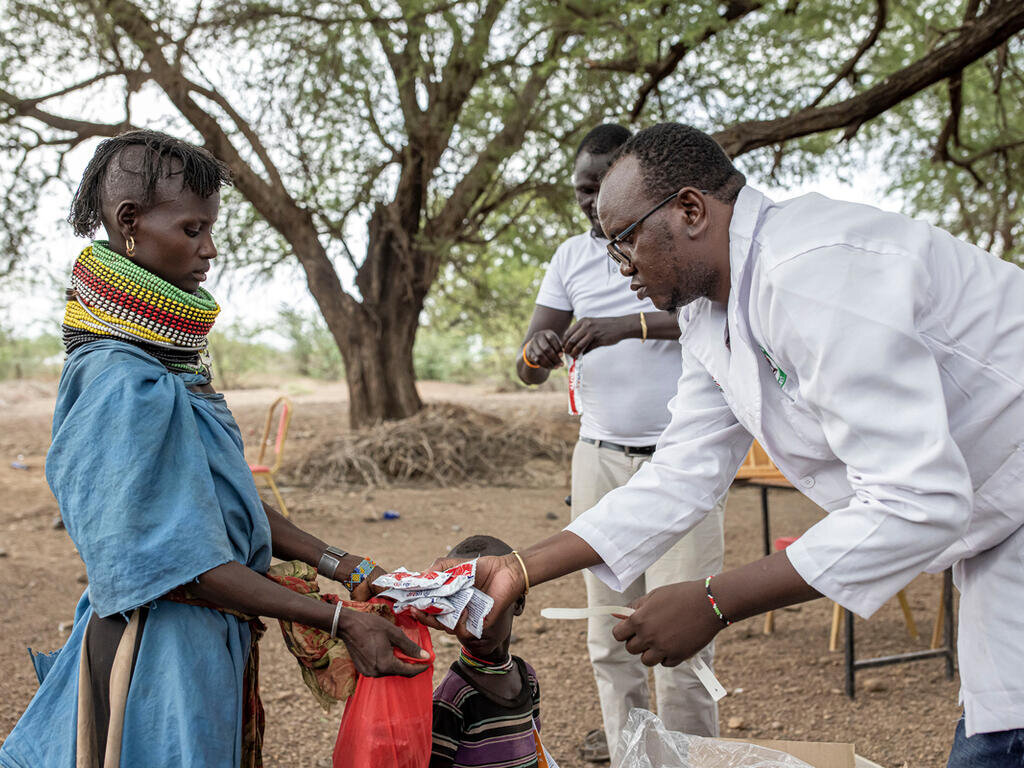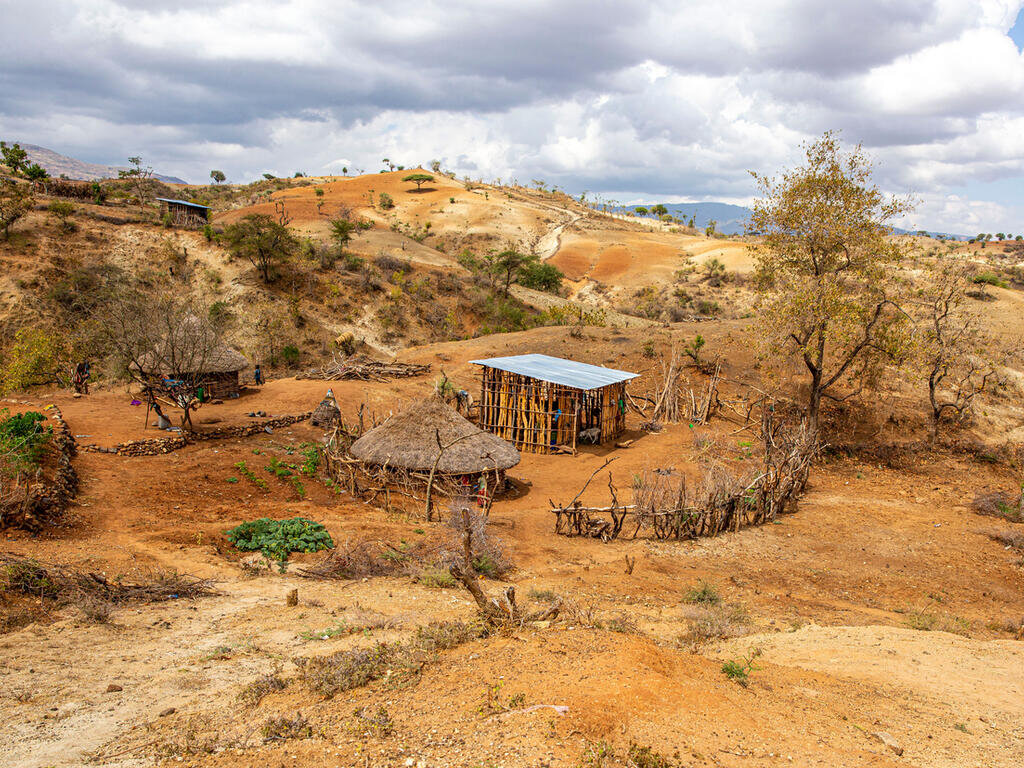By Savannah Paolillo | Donor Services
Around the world, droughts are becoming increasingly common due to rising global temperatures—and have serious impacts, leading to crop failures, famine and malnutrition. East Africa, for example, is facing its worst drought in years, affecting 40 million people. Many are facing near-famine and malnutrition because of the drought’s impact on food supplies. Learn more about drought, what causes it, and what the International Rescue Committee (IRC) is doing to help in East Africa. Drought is caused by a lack of rainfall, causing serious water shortages. It can be fatal.
More specifically, drought is defined by a period of unusually dry weather caused by low rainfall and high temperatures. It is also defined in terms of the impact on agriculture when crops fail due to lack of moisture in soil, leading to food shortages and serious human impacts such as famine in severe cases.
What causes drought?
Droughts can be triggered by natural causes such as weather patterns. But increasingly they are caused by human activity.
Other natural causes of drought:
How are people impacted by drought?
Drought causes food insecurity when crops fail. When a substantial part of the population can no longer access food this is known as famine and results in widespread acute malnutrition, disease and death across the affected region. East Africa is currently experiencing widespread food shortages and near-famine, with millions of children under 5 suffering from severe acute malnutrition.
A lack of nutritious food caused by food shortages leads to acute malnutrition. Children suffering from malnutrition are a high risk category. Deprived of essential vitamins and minerals required for their proper growth, they are prone to disease, severe developmental delays and even death. Effective treatment for children suffering from malnutrition exists, but often does not reach those most in need. The IRC has developed a simplified process for treating malnutrition in order to reach more children with lower costs.
Drought affects vital access to clean drinking water. This can lead to people drinking contaminated water, which brings about outbreaks of diseases like cholera and typhoid. These diseases can also spread in places with poor sanitation, another side-effect of having no clean water.
People must travel further to find clean water. This usually falls to women and children, who must sacrifice other work and school to carry out an incredibly physical task. Without access to clean water or food, many must permanently leave their homes in order to survive. The World Health Organization states, “Water scarcity impacts 40% of the world’s population, and as many as 700 million people are at risk of being displaced as a result of drought by 2030.”
What is the IRC doing to help in East Africa?
East Africa is home to some of the IRC’s longest-running programs globally. Today, over 2,000 IRC staff in the region are scaling up our programs to address the current drought and rising food insecurity, including expanding to new areas to meet severe needs. This includes health programming, food and cash assistance, and providing clean water.
Currently, 80% of malnourished children do not have access to treatment. The IRC has developed a streamlined approach for treatment so that more children can access treatment and recover. We are working to raise funds and remove blocks so that this treatment can be distributed at scale in places like East Africa.
How can I help drought-stricken communities?
The IRC is on the ground in drought-stricken communities around the world, delivering lifesaving support where it's needed most. Your donation empowers our work, from delivering medical services, cash assistance, malnutrition prevention and treatment programs, education initiatives and so much more.
By Savannah Paolillo | Donor Services
By Savannah Paolillo | Impact Report Services
Project reports on GlobalGiving are posted directly to globalgiving.org by Project Leaders as they are completed, generally every 3-4 months. To protect the integrity of these documents, GlobalGiving does not alter them; therefore you may find some language or formatting issues.
If you donate to this project or have donated to this project, you can receive an email when this project posts a report. You can also subscribe for reports without donating.
Support this important cause by creating a personalized fundraising page.
Start a Fundraiser
